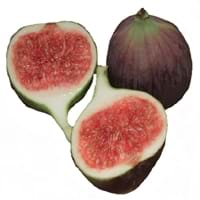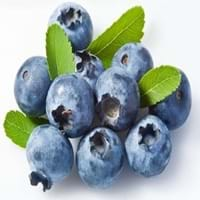Health Benefits
Cancer prevention, Controls blood pressure, Heart care, Increase in haemoglobin, Prevents constipation, Prevents macular degeneration, Reduces nervous tension
Cancer prevention, Cures gastro-intestinal troubles, Improves night vision, Improves stomach health, Prevents diabetes, Prevents high blood pressure, Reduces blood circulation problems
General Benefits
Controls blood pressure, Helps in weight loss, Maintains healthy cholesterol level, Strengthens bones
Fights against infections, Helps in weight loss, Prevents blood clotting in vessels, Treatment of urinary tract infections
Skin Benefits
Brightens and lightens complexion, Hydrates skin, Skin rejuvenation, Treatment of acne
Anti-aging benefits, Nourishes skin, Protects against skin damage
Hair Benefits
Good conditioner, Regulates hair growth, Softening mask
Prevents hair loss
Allergy Symptoms
Abdominal pains, Anaphylaxis, Coughing, Headaches, Hives, Itching, Nasal congestion, Skin rash, Sneezing, Sore throat, Swelling of hands
Not Available
Side Effects
Allergic reaction, Skin rash, Possibly unsafe during pregnancy
Decrease in blood sugar levels, Diarrhoea, Dizziness, Headache, Internal bleeding, Stomach pain
Best Time to Eat
Best if taken as a breakfast (or empty stomach), Don't consume at night and before bed, Morning time (before lunch)
As a snack in the late afternoon, Don't consume at night and before bed, Eat the fresh ones, avoid mixing with any other foods, don't eat after meal., Morning time (before lunch)
Vitamin B5 (Pantothenic Acid)
Vitamin C (Ascorbic Acid)
Vitamin K (Phyllochinone)
Phytosterol
Not Available
Calories in Fresh Fruit with Peel
Calories in Fresh Fruit without Peel
Not Available
Not Available
Calories in Frozen Form
Not Available
Calories in Dried Form
Not Available
Calories in Canned Form
Not Available
Season
Summer, Winter
Summer
Varieties
Abyad, Adriatic, Alma, Atreano, Bataglia, Black Bethlehem, Black Madeira, Black Mission, Brown Turkey, Sierra, Calimyrna, Kadota, Deanna, Figoin and Hardy Chicago Fig
Dwarf bilberry, Piper, bog blueberry, Northern bilberry, Mountain bilberry and Oval-leaved bilberry
Color
Green, Purple, Red
Dark purple
Inside Color
Pink
Light Green
Origin
Western Asia
Unknown
Soil Type
Clay, Limestone, Loam, Sandy
Moist, Well-aerated
Climatic Conditions
Dry, Warm
Cold
Facts about
- Fig tree is considered as a symbol of abundance, fertility and sweetness.
- The fig is made up of 55% of natural sugar so they are the sweetest fruits.
- Figs are used as a fat substitute in recipes.
- Bilberries are used in manufacturing of alcoholic drinks.
- They are used to improve aromas of sorbets.
- The green extract of it's leaves is used in textile industry as natural dye.
Top Producer
Turkey
Japan
Other Countries
Albania, Algeria, Brazil, Egypt, Iran, Morocco, Syria, Tunisia, United States of America
Denmark, Finland, Iceland, Sweden
Top Importer
France
United States of America
Top Exporter
Turkey
Chile
Botanical Name
Ficus carica
Vaccinium myrtillus
Synonym
Not Available
blaeberry, whinberry, European blueberry, whortleberry
Subkingdom
Tracheobionta
Tracheobionta
Division
Magnoliophyta
Magnoliophyta
Class
Magnoliopsida
Magnoliopsida
Subclass
Alismidae
Dillenhidae
Family
Moraceae
Ericaceae
Species
Ficus carica
Vaccinium myrtillus
Generic Group
Mulberry
Heath
Difference Between Fig and Bilberry
We might think that Fig and Bilberry are similar with respect to nutritional value and health benefits. But the nutrient content of both fruits is different. Fig and Bilberry Facts such as their taste, shape, color, and size are also distinct. The difference between Fig and Bilberry is explained here.
The amount of calories in 100 gm of fresh Fig and Bilberry with peel is 74.00 kcal and 44.00 kcal and the amount of calories without peel is Not Available and Not Available respectively. Thus, Fig and Bilberry belong to Low Calorie Fruits and Low Calorie Fruits category.These fruits might or might not differ with respect to their scientific classification. The order of Fig and Bilberry is Rosales and Ericales respectively. Fig belongs to Moraceae family and Bilberry belongs to Ericaceae family. Fig belongs to Ficus genus of Ficus carica species and Bilberry belongs to Vaccinium genus of Vaccinium myrtillus species. Beings plants, both fruits belong to Plantae Kingdom.









